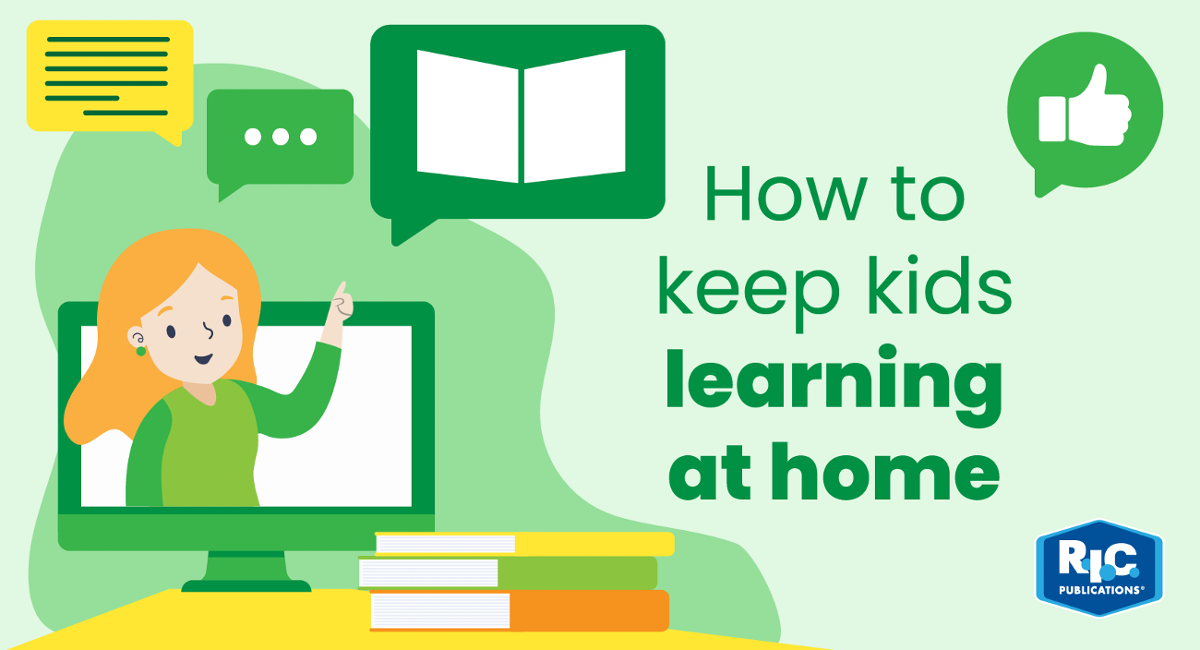- Tuesday 05 May 2020
- 0 Comments
With many Australian children learning from home, parents are doing their best to take on a new and often challenging responsibility of teaching their child, with new-found realisation of how complex the role of educator can be!
In these unprecedented times, COVID-19 has changed the way students in Australia and across the world are learning, and many parents are nervous about this time disrupting their children’s education. At the same time, social distancing and self-isolation has brought significant stress to children and adults alike; keeping families happy and children learning, while also ‘learning to teach’, can be stressful in itself.
As publishers of Australian educational resources for decades, and with our roots firmly in the teaching community, we’re passionate about learning! We’d like to share some tips and ideas on making the transition easier so that learning from home can be a positive, memorable and bonding experience for you and your family.
Stay positive about learning
Great teachers cultivate a love of learning and a mindset of curiosity. We’ve talked in our blog before about fostering a love of learning at home; children are hardwired to need to learn about the world around them, and parents can play an important role in building confidence and interest—now more than ever.
Be conscious about the conversations you have around learning so that you can share your passions, while also being careful not to discourage your children from subjects you didn’t love as a child yourself. Struggled with maths? Some of your friends might have found it fascinating—why? At any age, bringing context to what your children are learning helps to light that spark.
Finally, if your child is finding something difficult, make sure the conversations you have together are positive. Sometimes, progress can be slow, and learning new things can be difficult, but it’s important not to get frustrated. You’ll get there, together.
Embrace the right kind of screen time
COVID-19 has created a whole new way of doing things, and you may be balancing many responsibilities as well as round-the-clock parenting. Many kids are getting more screen time than ever, and at the same time parents are remembering the recommendations about screen time and dealing with feelings of guilt (in addition to overwhelm, exhaustion and loneliness!).
But according to UNICEF, ‘with more than 130 countries restricting movement to contain the COVID-19 pandemic, it is time to recognize the internet as a critical tool for children’s access to learning, play, entertainment and social interaction. In short, they might have a lot to gain from spending time in the digital space’.
From using high-quality digital learning resources (like our fantastic digital range!) to age-appropriate educational videos and apps, and even learning how to code, there’s so much that can be gained from strategic exposure to the digital world. You and your kids can also bridge that loneliness by staying connected to family—whether down the road or across the planet—through video calling.
Want to know more? There’s a great article on The Conversation from the University of Calgary on navigating children’s screen time during social distancing, so that technology can support your children’s development instead of detracting from it.
Establish routines
Children thrive on routines. Routines make them feel safer, and also sets clear expectations, reducing the tendency to try to negotiate themselves out of education. Yes, they’d probably prefer to be eating junk food in front of TV; but if they know this time is always dedicated to learning something in particular, they’re more likely to see it as a normal part of their day.
According to University of Melbourne, keeping a schedule for home learning can reduce anxiety and create predictability; they recommend that these schedules combine academic, creative, physical and social activities. In these unusual times, routine is something that children need more than ever, and you can help provide that stability as they learn from home.
Make use of great educational resources
There’s a good reason why becoming an educator is a lengthy and complex process, full of theory and practice alike: it’s hard. While there’s some overlap between parenting and classroom management—in particular, providing emotional support, fostering confidence and helping children overcome challenges—understanding the psychology behind learning and how to motivate your child may be a brave new world. Sure, you know arithmetic, but how do you teach it? Suddenly, you’re a maths, English, health, humanities and science teacher all rolled into one—and possibly with no training. Feel like you’ve been thrown in the deep end? You’re not alone; and in some ways, while you’re teaching your children, they’re teaching you too.
In light of the task ahead of parents teaching their children at home—challenging and rewarding in turns—we’ve released a new Learning at home workbook series. If you need support providing your children with daily activities in English, maths and science, this series is for you!
Designed for Years 1 to 6, and only $7.95, each Learning at home workbook gives you four weeks of activities in these key learning areas. The books can be completed independently by young learners, or with adult supervision—and our workbooks come with a FREE downloadable parent guide (and answers) to help you guide your children as they learn from home.
This series is available in both print and digital for your convenience. Have a closer look and download a free sample today!
|
|
|
|

.png)
.PNG)
.PNG)